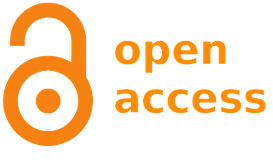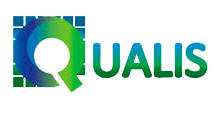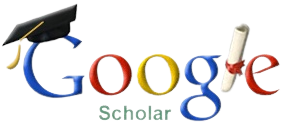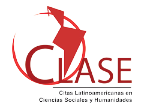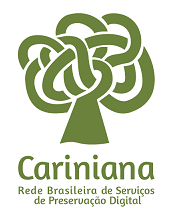The action in information: between mathematical theory and the actor-network theory
DOI:
https://doi.org/10.5433/1981-8920.2020v25n4p71Keywords:
Information science, Mathematical theory of communication, ActorNetwork Theory, Technology.Abstract
Introduction: The work reflects on the object of Information Science, highlighting its positivist influence, as well as its meaning in information theory and actor-network theory.Objective: to analyze the conceptual and pragmatic contribution of the mathematical theory of communication and the actor-network theory in the conception of the Information Science object.
Methodology: this is a qualitative study whose design is based on bibliographic research. The discussion is centered on the mathematical communication theory of Shannon and Weaver, who accompanied the development of Information Science, and on the proposals of the actor-network theory method, by Bruno Latour, for the understanding of the multidisciplinary and technological intersections of the field.
Results: the theoretical-conceptual, pragmatic contribution of the mathematical theory of communication in the development of Information Science stands out. The concept of quantitative information in information theory establishes a reductionist causality, which does not allow to absorb the complexity of communication. Along with some critical theories of communication, the actor-network theory presents itself as an alternative for the ontological understanding of information and the respective transformations.
Conclusions: the work assume that the information object, from Information Science, belongs to the social category, not as a finished and immutable thing, but as a set of associative interactions of different human and non-human mediating agents. These agents contribute to mediation, interpretation, and meaning of information. Therefore, they must be mapped by the information science reports.
Downloads
References
ALVES, M. A.; VALENTE, A. R. Informação e comunicação: a abordagem quantitativa e alguns de seus críticos. In: ALVES, M. A.; GRÁCIO, C.C.; MARTINEZ-ÁVILA, D. Informação, conhecimento e modelos. Campinas: UNICAMP; Marília: Oficina Universitária, 2017. p. 111-130. Disponível em: https://www.marilia.unesp.br/Home/Publicacoes/informacao-conhecimento-e-modelos---completa-com-capa.pdf. Acesso em: 14 mar. 2018.
BAEZA-YATES, R.; RIBEIRO NETO, B. Modern information retrieval. New York: The ACM Press, 1999.
BARTHES, R. Elementos de semiologia. 16. ed. São Paulo: Cultrix, 2006.
BEZERRA, A. C.; SALDANHA, G. S. Sobre Comte, Durkheim e Tarde em Otlet: o papel do positivismo na consolidação dos estudos da informação. In: ALBAGLI, S. Fronteiras da Ciência da Informação. Brasília: IBICIT, 2013. p. 34-56. Disponível em: http://repositorio.ibict.br/bitstream/123456789/453/1/Fronteiras%20da%20Ci%C3%AAncia%20da%20Informa%C3%A7%C3%A3o.pdf. Acesso em: 10 out. 2017.
BUCKLAND, M. K. Information as thing. Journal of the American Society for Information Science, v.45, n.5, p. 351-360, 1991.
CAPURRO, R. Epistemologia e Ciência da informação. In: ENCONTRO NACIONAL DE PESQUISA EM CIÊNCIA DA INFORMAÇÃO, 5., Belo Horizonte, 2003. Anais [...] Belo Horizonte: UFMG, 2003. Disponível em: http://www.capurro.de/enancib_p.htm. Acesso em: 31 mar. 2011.
CAPURRO, R.; HJORLAND, B. O conceito de informação. Perspectivas em Ciência da Informação, v.12, n.1, p.148-207, jan./abr. 2007. Disponível em: http://portaldeperiodicos.eci.ufmg.br/index.php/pci/article/view/54/47. Acesso em: 10 mar. 2014.
CHOMSKY, N. Linguagem e mente. São Paulo: Editora UNESP, 2009.
CHU, H. Information representation and retrieval in the digital age. 3. ed. New Jersey: Asist&T, 2007.
ÇENGEL, Y. A.; BOLES, M. A. Termodinâmica. 7. ed. Porto Alegre: AMGH, 2013.
DURKHEIM, E. As regras do método sociológico. 3. ed. São Paulo: Martins Fontes, 2007.
GLEICK, J. A informação: uma história, uma teoria, uma enxurrada. São Paulo: Editora Schwarcz S.A., 2013.
GOMES, H. F.; SILVA, J. L. C. A informação em devir:uma reflexão filosófica no contexto da disciplinaridade. DataGramaZero, v. 14, n. 2, 2013. Disponível em: http://hdl.handle.net/20.500.11959/brapci/7660. Acesso em: 10 jul. 2018.
HESSEN, J. Teoria do conhecimento. São Paulo: Martins Fontes, 1999.
KOWALSKI, G. Information retrieval systems: theory and implementation. 3.ed. Massachusetts: Kluwer Academic Publishers, 1997.
KUHN, T. S. A estrutura das revoluções científicas. 5. ed. São Paulo: Editora Perspectiva, 1998.
LATOUR, B. Reagregando o social: uma introdução à teoria do ator rede. Salvador: Edufba; Bauru: Edusc, 2012.
LOGAN, R. K. Que é informação: a propagação da informação na biosfera, na simbolosfera, na tecnosfera e na econosfera. Rio de Janeiro: Contraponto: PUC-Rio, 2012.
MANNING, C. D.;RAGHAVAN, P.; SCHUTZE, H. Introduction to information retrieval. Nova Iorque: Cambridge University Press, 2008.
MC LUHAN, M. Os meios de comunicação com extensões do homem. São Paulo: Editora cultrix Lda, 1971.
MOLES, A. A. Teoria dos objetos. Rio de Janeiro: Edições Tempo Brasileiro, 1981.
PEIRCE, C. S. Semiótica. São Paulo: Perspectiva, 2005.
RIJSBERGEN, C. J. V. Information Retrieval. 2.ed. London: Butterworths, 1979.
ROCHA JÚNIOR, V. C. Princípios de teoria da informação digital aplicada. Rio de Janeiro: Intercedência, 2018.
SANTAELLA, L. A ecologia pluralista das mídias locativas. Revista FAMECOS, Porto Alegre, n.37, p. 20-24, dez. 2008. Disponível em: http://revistaseletronicas.pucrs.br/ojs/index.php/revistafamecos/article/%20viewFile/4795/3599. Acesso em: 10 mar. 2019.
SANTAELLA, L. O que é semiótica. São Paulo: Editora Brasiliense, 1983.
SANTAELLA, L.; NÖTH, W. Introdução à semiótica: passo a passo para compreender os signos e a significação. São Paulo: Paulus, 2017.
SERRA, J. P. Manual da Teoria da Comunicação. Covilhã: Livros LabCom, 2007. p.203. Disponível em: http://www.labcom-ifp.ubi.pt/ficheiros/20110824-serra_paulo_manual_teoria_comunicacao.pdf. Acesso em: 20 fev. 2018.
SHANNON, C. E.; WEAVER, W. The mathematical theory of communication. Urbana: Tenth priting, 1964.
SILVA, A. M.; RIBEIRO, F. Paradigmas, serviços e mediações em Ciência da Informação. Recife: Néctar, 2011.
Downloads
Published
How to Cite
Issue
Section
License
A revista se reserva o direito de efetuar, nos originais, alterações de ordem normativa, ortográfica e gramatical, com vistas a manter o padrão culto da língua e a credibilidade do veículo. Respeitará, no entanto, o estilo de escrever dos autores. Alterações, correções ou sugestões de ordem conceitual serão encaminhadas aos autores, quando necessário.
O conteúdo dos textos e a citação e uso de imagens submetidas são de inteira responsabilidade dos autores.
Em todas as citações posteriores, deverá ser consignada a fonte original de publicação, no caso a Informação & Informação.




